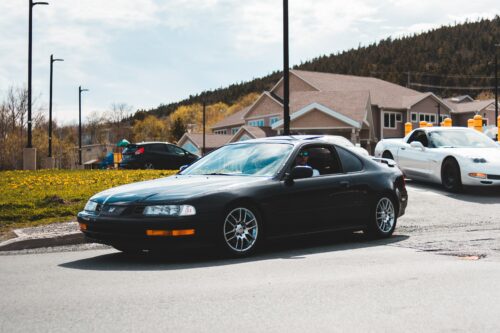Fremont, CA – Need Your Honda Pilots Brakes Repaired? Visit Our Local Auto Shop
Posted in: Industry News
 How Brakes Work
How Brakes Work
Brakes slow your car by transforming your car’s energy of motion to heat energy. The process begins when you step on the brake pedal and finishes as brake pads are forced against brake rotors. The pads and rotors are designed to create friction heat and eliminate it efficiently.
Brake Rotors
Brake Rotors are the plate-shaped components you see through wheel openings. Wheels each have a rotor secured, and the rotor turns at the wheel’s speed. Most rotors are manufactured of cast iron, but there are more possibilities for different purposes. Cast iron absorbs and emits heat well and is reasonably priced. For long service life, we can recommend ceramic rotors. They have the added benefit of reduced brake dust accumulation. When your rotors wear to the factory-endorsed minimum, we will advise replacement. Worn rotors get thinner and can’t absorb and emit heat fast enough for prolonged braking while descending a hill. We recommend new rotors with new brake pads. Brake pads deposit some of their material on the rotors. New brake pads may be incompatible with old rotors with a buildup of different pad materials.
Brake Pads
OEM brake pads give adequate braking ability, long service life, and quiet operation. Optional pad constituents, like ceramic, are on hand for exceptional circumstances. The pads are retained in calipers surrounding the rotors.
Brake Calipers
The functional parts of calipers are pistons. Brake caliper pistons touch the brake pads on one surface with brake fluid on the other. As brake fluid becomes pressured by the master cylinder, the fluid presses the pistons against the pads. The brake pads then squeeze the rotors to cause friction to brake the vehicle. When you lift off the brake pedal, the caliper piston retracts to minimize friction when braking is unnecessary.
Master Cylinder
The master cylinder has a piston that compresses brake fluid routed to the calipers when forced by the brake pedal. A lever connects the master cylinder to the brake pedal. The lever uses mechanical advantage to multiply the force you exert on the pedal. The master cylinder can be a source of leaks; our mechanic will closely inspect it.
Brake Lines
Brake lines link the master cylinder and calipers. They route pressurized brake fluid from the master cylinder to the caliper pistons. Since the brake lines are metal and rubber, they need regular inspection to detect leaks.
Brake Fluid
Brake fluid carries the pressure created at the master cylinder to the brake calipers. We suggest a two-year drain and fill service to remove the contamination this fluid accumulates.
Wear Sensors
Brake wear sensors alert you that your brake parts are approaching the wear limit. When metallic sounds emanate from the area of the wheels, it is likely that the wear sensors alert to the need for brake service.
Brake Inspections
We suggest brake inspections yearly. While your Honda Pilot is on our lift for an oil change, our technician can scrutinize the entire brake system to remedy faults before they cause a significant problem.
The Honda dealer service department considers brake components to be everyday wear items. The factory warranty will not cover a brake job.
Call us or visit our website to see the significant price difference between our shop and the dealer service department for brake repair or any maintenance you require.
Return to: Fremont, CA – Need Your Honda Pilots Brakes Repaired? Visit Our Local Auto Shop
Social Web